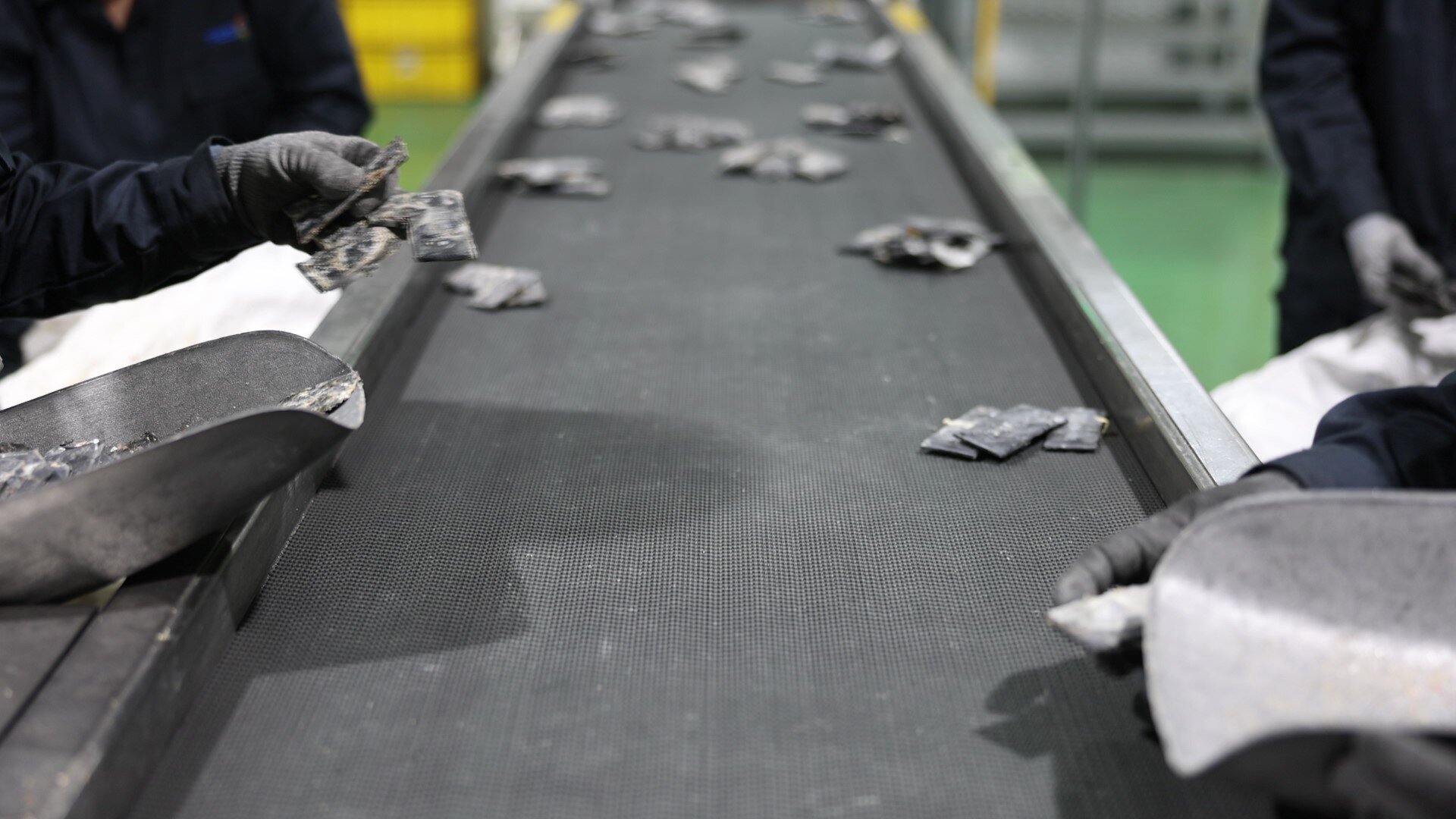SmaRT partnership to reduce, reuse, recycle, and reform E-Waste Plastic
As the digital economy explodes, with more people joining the information age, so too has the electronic hardware being consumed and discarded. Globally, material resource recovery is fraught with complexities, which is why electronics recycler TES partnered with the University of NSW Sydney’s Centre for Sustainable Materials Research and Technology (SmaRT Centre) to find innovative solutions to the e-waste problem.
The Complexity of E-Waste
We are producing a ‘tsunami of e-waste’, set to increase at a rate of 3–4% per year, according to the recent United Nations sponsored Global E-waste Monitor Report, which estimates that e-waste will reach 52.2 million metric tonnes by 2021. Unfortunately, only 20% is recycled correctly today, with the remaining 80% being shipped to developing countries (not always legally). This not only creates environmental and human impacts, but also a fundamental economic problem as well; we are throwing away valuable resources that can be reused in the circular economy. The report also states the total value of all raw materials present in e-waste is estimated at approximately 55 billion euros.
In an attempt to address some of the illegal export issues, the Basel Convention was established and ratified by 189 countries to control the flows of hazardous materials across borders. In 2017, the Global E-waste Monitor reported that 66% of the world population is now covered by e-waste legislation, up from 44% in 2014. However, interpreting which waste is hazardous and navigating local, regional and international controls are both activities layered with complexities that are challenging even for the largest organizations.
E-waste is traditionally difficult to recycle due to its composition of disparate elements. Add to this the need for recycling infrastructure, the high cost of transportation and labour and the surrounding economics, and one can see why there is not a quick fix to this problem. We urgently need more closed loop solutions to address the risk and complexity of e-waste processing.
Partnering for Solutions
Since 2015, TES has been working in partnership with the UNSW SMaRT Centre to transform ‘problem’ waste from end of life electronics into high value products. Whilst the mental image of e- waste may conjure up scenes of mountains of metal-based products, a large percentage of e-waste is actually plastic. A mobile phone, for example, is 40–58% plastic by weight, while printers can comprise up to 70% plastic.
TES is committed to solving these problems on a global scale and has developed a process to transform e-waste plastics into printer filaments for 3D Printing. This helps to reduce the e-waste plastics problem and open new market opportunities in 3D printing, a market expected to be worth $16 billion (US) by 2028, according to IDTechEx research.
The unique technology is used to upcycle e-waste plastic and waste toner powder (from printer cartridges) and other problematic wastes from electronics into 3D print filaments. The end of life waste is separated, shredded and mixed to create a new versatile material.
The lack of economic value in plastics, coupled with their elemental composition, make plastics one of the more challenging commodity streams to address. There are also limitations to the number of times plastics can be recycled without a drastic loss in strength. TES’s new process offers minimal loss of quality / strength and the filaments can be repeatedly recycled. A lifecycle analysis of the filament production process found a 28% reduction in carbon emissions compared to using virgin plastics, making the product more energy efficient. While this process creates more sustainable 3D printer filaments, even more importantly it introduces a new solution for e-waste plastics and is a great example of the Circular Economy in action.
The Promise of Circular
The Circular Economy aims to eradicate waste through reuse of products and their components. By definition, it is a driver for innovation in the areas of material, component and product reuse, as well as for new business models. In a circular economy, more effective use of materials enables the creation of more value, both by cost savings and by developing new markets or growing existing ones.
Quite simply, it’s about keeping the value in the products for as long as possible and reusing them in new products at the end of their lifecycle. Closing the loop in this way reduces the need for new raw materials, waste disposal and energy, while creating economic growth, new jobs and business opportunities by stimulating the market for new products made with recycled content.
“It’s clear we need more circular methods and one of the ways to do that is to see waste as a valuable resource, not dumped or incinerated. Our goal is to introduce the 4th R– Reform; we want to reform and transform what we do”, says Alvin Piadasa, Director of Sustainability for SK tes. Thinking about waste as a valuable resource helps move things further away from the take–make–dispose economy we live in today. The Circular Economy is set to become a $1 trillion industry globally by 2025, according to the World Economic Forum (WEF).
“A true circular economy will not exist if there is no effort to create value from the waste we generate. Our goal is to make technologies accessible to maximize the recovery of materials and create jobs that ultimately connect to the global supply chain. By supplying this valuable material, we want to stimulate manufacturing innovation, enhance our local economies and be a responsible partner for global supply chains”, said Alvin.
Professor Veena Sahajwalla, Director of the UNSW SMaRT Centre and partner for this project, said: “We need to start thinking about waste as a source of renewable materials because it is. Plastics can be reused over and over, and metals can be reused over and over virtually forever. Waste is not waste if it feeds into a new process that produces a new valuable material. Working with SK tes, we are able to bring that principle to life through innovation and circular thinking. This really is very exciting, and SK tes should be congratulated for using this technology in a commercial setting.”
So, what is next for this approach?
SK tes is working to scale this technology through mobile micro-factories. The world’s first micro- factory was launched in April 2018 by UNSW as a demonstration model, showing how local processing can be done rather than exporting waste streams overseas. The micro-factories can fit into sites as small as 50 square metres, with their modular design allowing for a high level of flexibility and adaptability. The solution is scalable and capable of dealing with a large volume of mixed plastic and other wastes. As a global leader in IT Lifecycle solutions, SK tes helps customers manage the commissioning, deployment and retirement of their information technology assets. With an extensive owned and operated global network of processing facilities, SK tes is one of the few companies in the world equipped to solve these kinds of challenges.
.png?width=220&name=TES%20_%20Eric%20Ingebretsen%20(white%20background).png) ABOUT THE AUTHOR
ABOUT THE AUTHOR
Eric Ingebretsen is the Chief Commercial Officer for SK tes. He has a deep background in technology lifecycle services; a committed, action-oriented professional with a laser focus on customer satisfaction and delivering results.
Since our formation in 2005, SK tes has been a circular economy leader focusing on IT Lifecycle Services, offering bespoke solutions that help customers manage the commissioning, deployment and retirement of Information Technology (IT) assets.
We understand the common challenges faced when managing IT equipment throughout its lifecycle, providing cost effective solutions whilst achieving compliance with all local and international data security, environmental, and industry regulations. Backed by Navis Capital Partners, one of southeast Asia’s largest private equity companies with over US$6 billion under management, SK tes now operates in 40+ locations. It is our mission to create outstanding value for our customers, employees, stakeholders, and the global community by leveraging our unique combination of security, value recovery, and environmental expertise.





